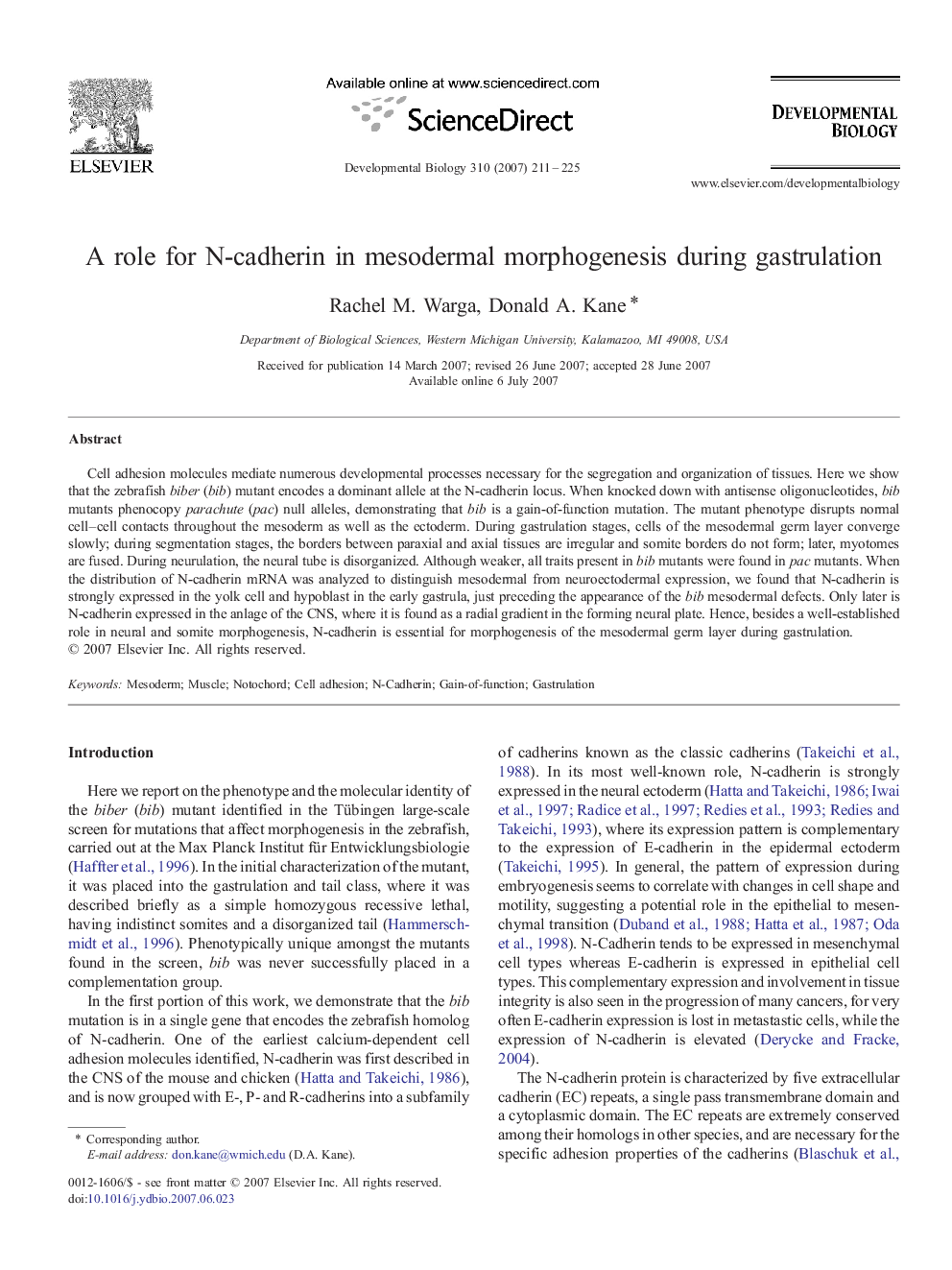| Article ID | Journal | Published Year | Pages | File Type |
|---|---|---|---|---|
| 8468378 | Developmental Biology | 2007 | 15 Pages |
Abstract
Cell adhesion molecules mediate numerous developmental processes necessary for the segregation and organization of tissues. Here we show that the zebrafish biber (bib) mutant encodes a dominant allele at the N-cadherin locus. When knocked down with antisense oligonucleotides, bib mutants phenocopy parachute (pac) null alleles, demonstrating that bib is a gain-of-function mutation. The mutant phenotype disrupts normal cell-cell contacts throughout the mesoderm as well as the ectoderm. During gastrulation stages, cells of the mesodermal germ layer converge slowly; during segmentation stages, the borders between paraxial and axial tissues are irregular and somite borders do not form; later, myotomes are fused. During neurulation, the neural tube is disorganized. Although weaker, all traits present in bib mutants were found in pac mutants. When the distribution of N-cadherin mRNA was analyzed to distinguish mesodermal from neuroectodermal expression, we found that N-cadherin is strongly expressed in the yolk cell and hypoblast in the early gastrula, just preceding the appearance of the bib mesodermal defects. Only later is N-cadherin expressed in the anlage of the CNS, where it is found as a radial gradient in the forming neural plate. Hence, besides a well-established role in neural and somite morphogenesis, N-cadherin is essential for morphogenesis of the mesodermal germ layer during gastrulation.
Related Topics
Life Sciences
Biochemistry, Genetics and Molecular Biology
Cell Biology
Authors
Rachel M. Warga, Donald A. Kane,
